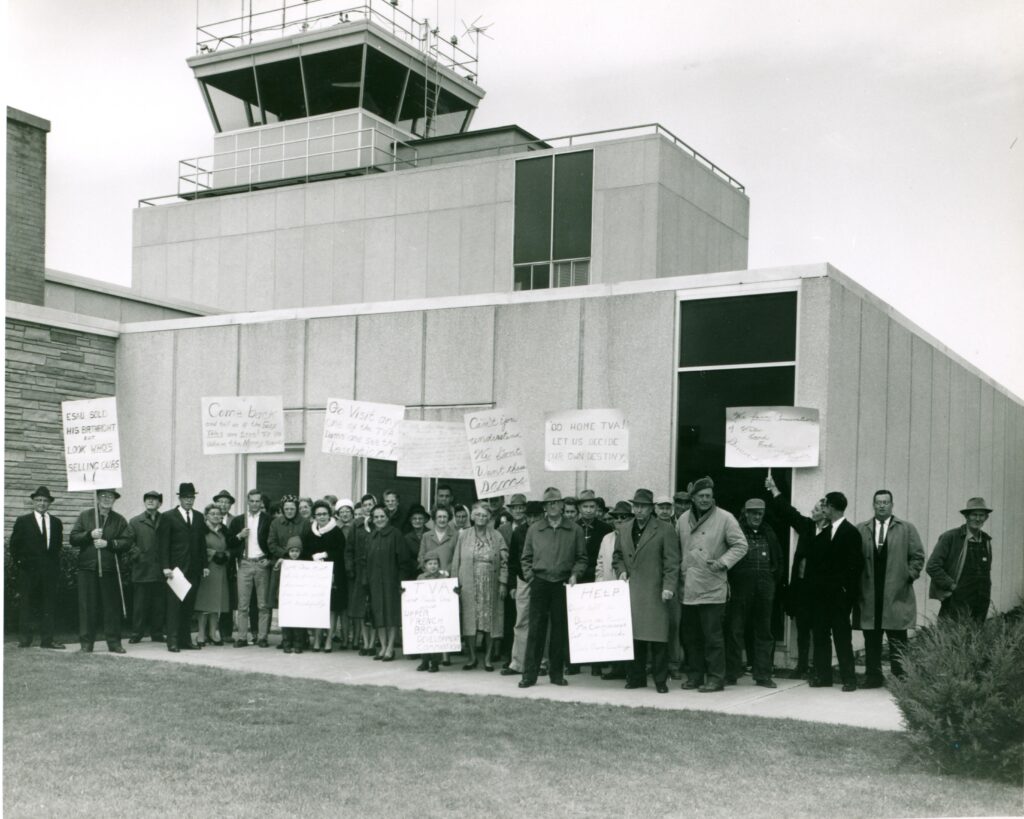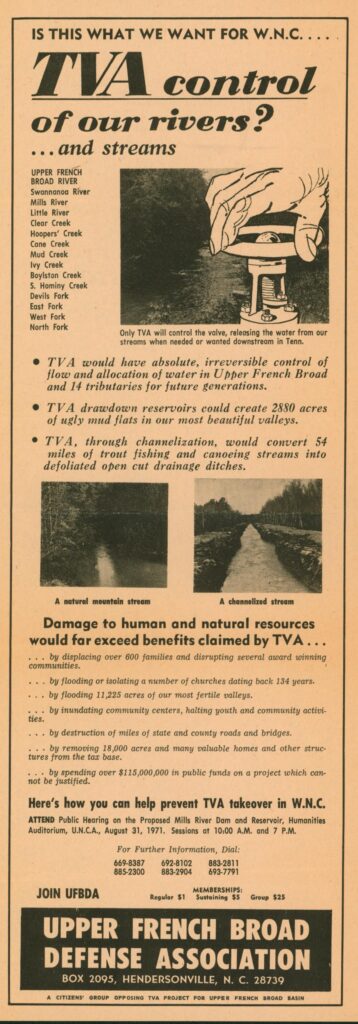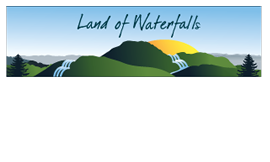TVA Protests and the Little River Community
by Laura Sperry Gardner
The Tennessee Valley Authority (TVA) was responsible for managing flood-prone areas in southern rural communities by damming water sources to control the flow supply of water. Often these dams were used to create hydroelectricity, which was meant to offset the loss of farmland in these communities. Although the program began in Tennessee, states such as Virginia, Kentucky, North Carolina, Georgia, Alabama, and Mississippi were also part of the hydroelectricity initiatives of the federal government entity as well.
In 1933 the TVA made an unsuccessful bid to dam and manage the Upper French Broad River after extensive research and study of the area and its viability had been done. The research was filed, and after some severe flooding in 1961, the old research was dusted off once more as the TVA pushed for a comprehensive plan to develop the Upper French Broad River area. The push for TVA control of the valley began in earnest in May of 1964.

that was being held at the Asheville Airport on November 30, 1966
The TVA proposal would have created three major dams in Transylvania County: one on the French Broad River at Cathey’s Creek that would have flooded the location of the American Thread plant and part of Rosman; one that would have flooded the Little River area and some of the best farmland in the county; and one that would have dammed the Davidson River that would have flooded the location of the Fish Hatchery and the Schenck Job Corps site. In addition to these economic impacts, there were communities that would have been entirely destroyed, community centers and homes put under water, and even a church that would have been marooned on a hill.
There was widespread support for the TVA initiative by government entities from the federal, state, and local levels. By the time that average citizens of Transylvania heard about the plan, much had been done behind closed doors to start the project already. Citizens rallied at the grassroots level to express the firm opposition to the TVA’s plans at locations that were not part of county governance, such as Austin’s Art Shop, Sherwood Forest, Eagle’s Nest Camp, and in the homes of river protection advocates, like Hap Simpson who was honored after his death for his work to conserve our rivers by being memorialized with a namesake river-access park. They created an organization, the Upper French Broad Defense Association (UFBDA), which at its peak had over 1,300 dues paying members and hundreds more who lent support. The “Dam Fighters,” as they called themselves, were enthusiastic, but didn’t seem to be making much headway until they garnered the support of young congressman Charles Taylor in 1966.

In a bipartisan effort, those opposing the TVA plan created a new group, the Citizens and Taxpayers League. For years, Transylvania County resisted the TVA development plan, despite surrounding counties being willing to participate. It was an all-or-nothing arrangement, however, and without the agreement of Transylvania, the plan did not move forward. Thousands of signatures were collected, numerous fundraisers organized, and word-of-mouth education spread like wildfire through the county as concerned citizens persisted in protecting their lands and communities.
November 1972 was when the TVA finally announced that it would not move forward with the plan. The political leverage that the UFBDA had acquired proved to be enough in a David and Goliath-type story that proves when Transylvania citizens work together, they can accomplish amazing things for their communities. Photographs and information for this column are provided by the Rowell Bosse North Carolina Room, Transylvania County Library. This article was written by Local History Librarian Laura Sperry Gardner. For more information, comments, or suggestions, contact NC Room staff at [email protected] or 828-884-1820.



